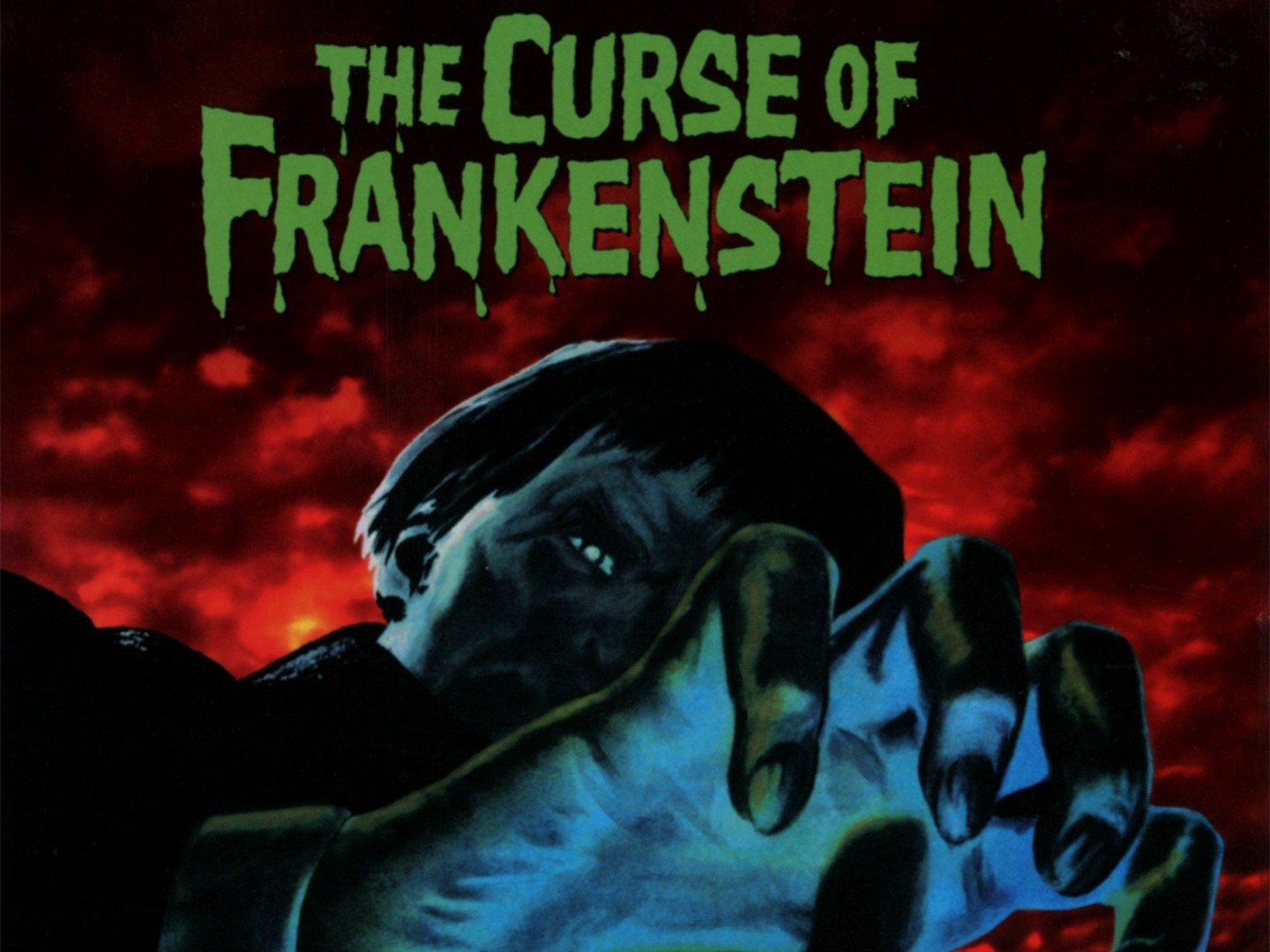
CURSE OF FRANKENSTEIN, THE
(director: Terence Fisher; screenwriters: Jimmy Sangster/based on the novel Frankenstein by Mary Shelley; cinematographer: Jack Asher; editor: James Needs; music: James Bernard; cast: Peter Cushing (Baron Victor Frankenstein), Christopher Lee (The Creature), Hazel Court (Elizabeth), Robert Urquhart (Paul Krempe), Paul Hardtmuth(Professor Bernstein), Valerie Gaunt (Justine, maid), Noel Hood (Aunt Sophia), Fred Johnson (Grandpa), Marjorie Hume (Mother), Melvyn Hayes (Frankenstein as a boy), Alex Gallier (Priest); Runtime: 83; MPAA Rating: NR; producer: Anthony Hinds; Warner Bros.; 1957-UK)
“Revitalized the British film industry.“
Reviewed by Dennis Schwartz
The breakthrough film for Terence Fisher(“The Mummy”/”The Gorgon”/”The Brides of Dracula”), which marked the start of Hammer’s successful commercial run on horror pics. The studio specialized in redoing popular period horror films in color and with more graphic violence and sex. If compared to the James Whale “Frankenstein”(1931), where Boris Karloff played the monster, this pic doesn’t fair that well. In this pic the self-absorbed craven arrogant scientist, Baron Victor Frankenstein (Peter Cushing), is the monster and the monster he creates, played by Christopher Lee (with a lousy rag-tag make-up job and not much of a personality, and veering between being pathetic and menacing), is only the secondary monster. This film revitalized the British film industry, establishing Hammer Studios as an internationally renown production company. But I didn’t find it impressive, in fact I found the pic tacky, stiff and not that involving. The screenplay by Jimmy Sangster gets all the diabolical drama possible out of Mary Shelley’s classic shocking novel, but not its lyrical value.
It opens with Baron Victor Frankenstein (Peter Cushing) in a country Swiss jail, charged with murder and set to be guillotined, who gets his wish to see a priest, not for salvation of his soul but to tell him his crazy creation story and claim the monster is the killer and not him so he can avoid facing execution. The Baron appears to be a raving lunatic, because there’s no evidence that a monster exists.
We then follow through flashbacks the Baron’s story, starting with his youth as an orphan, living with his aunt (Noel Hood) and cousin Elizabeth (Hazel Court). A new tutor, Paul Krempe (Robert Urquhart), was hired to help him discover the keys to life and the upstairs portion of his mansion was set up as an experimental laboratory. Soon the pupil surpasses in knowledge his tutor, who becomes his assistant. When a dead puppy was revived, the Baron believes he’s onto something and becomes obsessed with creating the perfect specimen and showing up the smug scientific community with his superior knowledge. Though a cultured and brilliant man, the Baron’s ego is unchecked and he becomes ruthless in getting only what he wants no matter the inhumane cost.
The Baron procures the body of a hanged highwayman and to get the brain he wants, the Baron pushes a genius mathematician (Paul Hardtmuth) over his castle’s railing. He uses extortion to get Paul’s reluctant help. The lower-class maid (Valerie Gaunt) is used as a sex object. The Baron only laughs at her when she says he promised her marriage. When she threatens to go to the authorities to report his unauthorized experiment, the aristocrat locks her in the lab and allows the monster to rip her apart.
The Baron plans to marry his cousin Elizabeth, whom he accidentally shoots when the monster escapes from the lab. In the end, no one else but Paul has seen the monster (who is brought back from the dead and escapes, but is killed when catching on fire from an oil lamp and falling through the skylight into an acid bath). When Paul visits the jail, he refuses to acknowledge the presence of a monster. The Baron will go to his death blaming Paul for ruining his creation by shooting the monster in the eye and thereby ruining his perfect brain. The Baron will not recognize that he has become a monster, not even caring that his creation killed an innocent blind grandfather and the others.
The Baron marries the beautiful Elizabeth and has a life filled with creature comforts, but refuses to acknowledge his life is a failure–even in the last shot when Paul doesn’t corroborate his story and he’s being led by the jailers to the guillotine.
It was made on a low budget of $250,000 and took in over $7 million in the international market. The lurid film set the regrettable trend for such cheesy, nasty and deplorable horror pics; though one must admit these Hammer pics all had style.

REVIEWED ON 10/30/2010 GRADE: B-